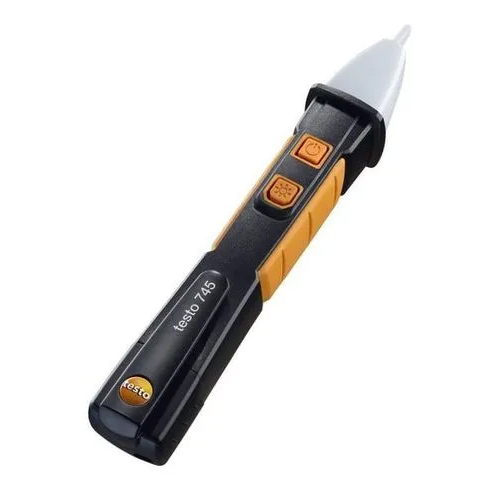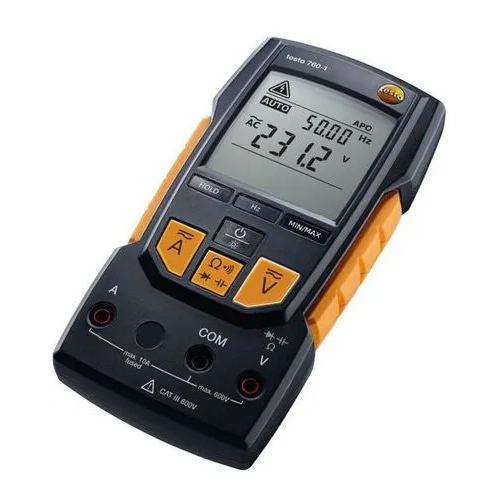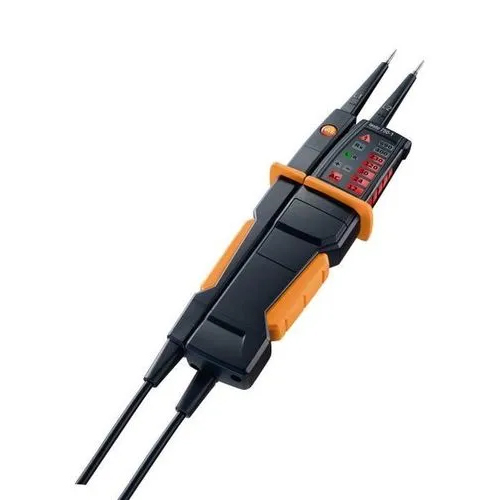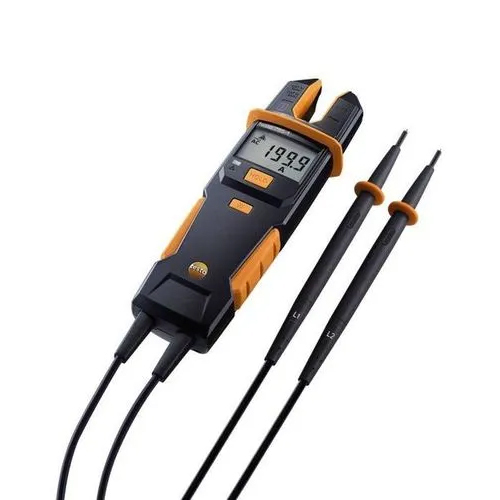Non-contact Voltage Tester
Price 4300.00 INR/ Piece
Non-contact Voltage Tester Specification
- Usage
- For Electronics, research labs, material analysis,
- Material
- Metal And Plastic
- Product Type
- voltage tester
- Weight
- 100-300 Grams (g)
- Display Type
- Digital Only
Non-contact Voltage Tester Trade Information
- Minimum Order Quantity
- 1 Piece
- Supply Ability
- 100 Pieces Per Week
- Delivery Time
- 1 Week
- Main Domestic Market
- All India
About Non-contact Voltage Tester
Features ofNon-contact voltage tester:
- Filter for high-frequency interference signals
- Measuring point illumination
- Visual and acoustic signal
- Adjustable sensitivity
- Waterproof and dustproof according to IP 67
Reliable Detection for Professionals
Engineered for precision and safety, our Non-contact Voltage Tester allows users to check live voltages without direct contact, minimizing risk. The digital display provides clear, quick readings, making it ideal for anyone working with electronics, research labs, or conducting material analysis. Experience efficient workflow and dependable results.
Designed for Everyday Use
With a robust blend of metal and plastic, this tester is built to withstand the rigors of professional use. Its lightweight design enhances portability, enabling technicians and researchers to easily carry and operate it during projects. Manufactured in India, it meets stringent quality standards suitable for both fieldwork and lab environments.
FAQs of Non-contact Voltage Tester:
Q: How do I use the Non-contact Voltage Tester safely in electronics and research laboratory settings?
A: To use the tester, simply bring the device close to the wire or component you wish to test. The digital display will indicate the presence of voltage without requiring direct physical contact, ensuring safe operation especially in sensitive environments like electronics and research labs.Q: What benefits does a digital display offer compared to analog in voltage testing?
A: A digital display provides clearer and more accurate voltage readings, minimizing the chance of misinterpretation. This enhances reliability, especially when analyzing complex materials or working in professional labs.Q: When should I use a non-contact voltage tester instead of a contact-based device?
A: Opt for a non-contact voltage tester whenever direct physical contact with electrical parts is hazardous or impracticalsuch as detecting live wires in crowded circuits, performing analysis on delicate electronic components, or working in laboratory environments.Q: Where can the Non-contact Voltage Tester be utilized most effectively?
A: The tester is best used in electronics workshops, research laboratories, material analysis facilities, and field locations where quick and safe verification of live currents is essential. Its design makes it suitable for both indoor and outdoor applications.Q: What is the basic process for voltage detection with this tester?
A: Begin by powering on the device, then move its sensing tip near your target wire or terminal. The digital display will instantly show the voltage status, allowing you to safely identify live circuits before proceeding with deeper analysis or repairs.Q: What advantages does the lightweight material construction present?
A: With a weight between 100 and 300 grams, the tester is easy to carry and operate for prolonged periods. The use of metal and plastic provides a balance of durability and portability, optimizing it for regular use in demanding environments.

Price:
- 50
- 100
- 200
- 250
- 500
- 1000+
More Products in Electrical Measuring Instruments Category
Digital Multimeter
Price 13000.00 INR / Piece
Minimum Order Quantity : 1 Piece
Product Type : Digital multimeter
Weight : 200800 Grams (g)
Usage : For Electronics, research labs, material analysis,
Material : Metal And Plastic
Voltage Tester
Price 6300.00 INR / Piece
Minimum Order Quantity : 1 Piece
Product Type : voltage tester
Weight : 200400 Grams (g)
Usage : For Electronics, research labs, material analysis,
Material : Metal And Plastic
Current/Voltage Tester
Price 18400.00 INR / Piece
Minimum Order Quantity : 1 Piece
Product Type : voltage tester
Weight : 200500 Grams (g)
Usage : For Electronics, research labs, material analysis,
Material : Metal And Plastic
Thermometer
Price 20000.00 INR / Piece
Minimum Order Quantity : 1 Piece
Product Type : Thermometer
Weight : 200500 Grams (g)
Usage : For Electronics, research labs, material analysis,
Material : Metal And Plastic

 Send Inquiry
Send Inquiry Send Inquiry
Send Inquiry




